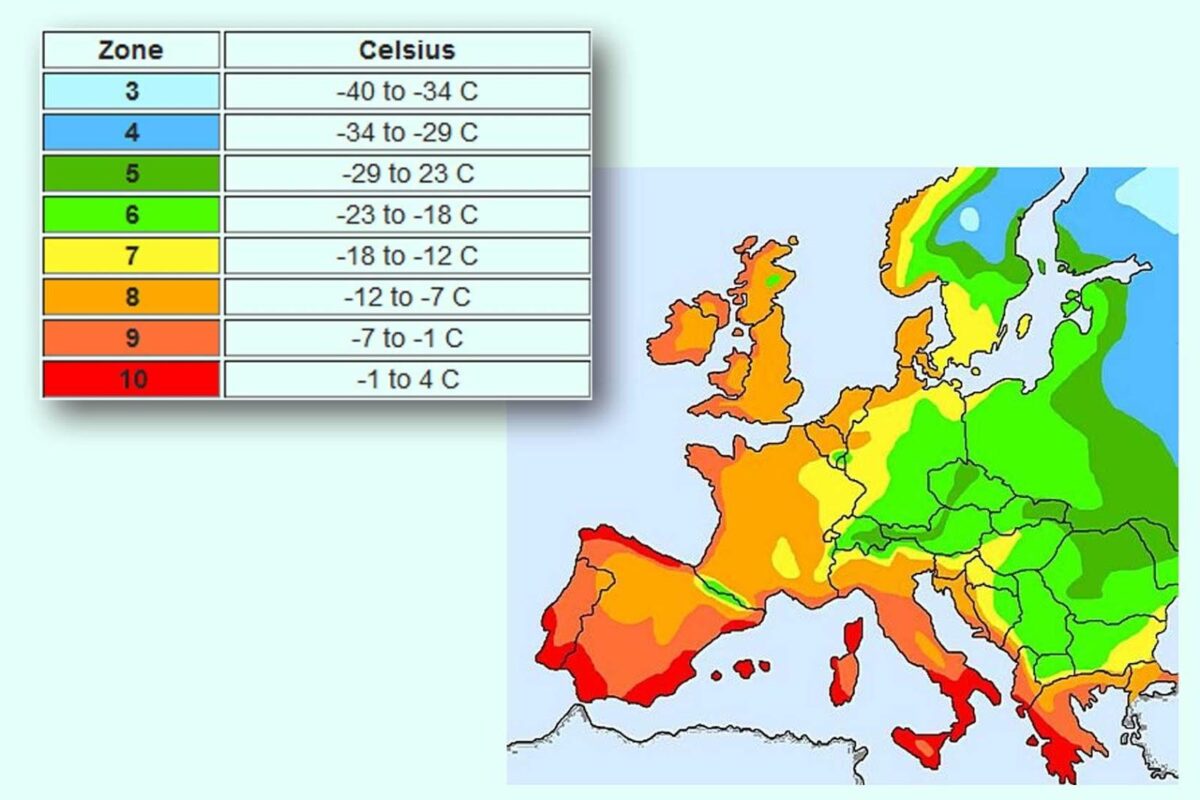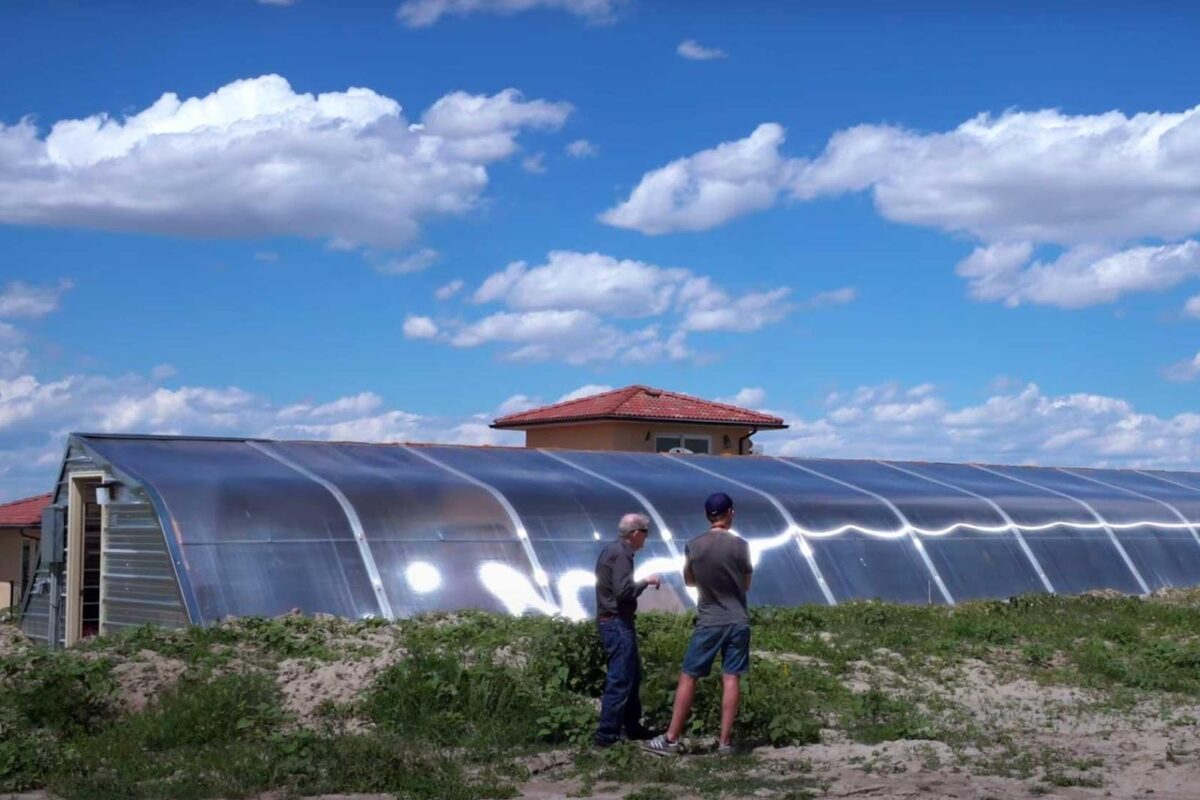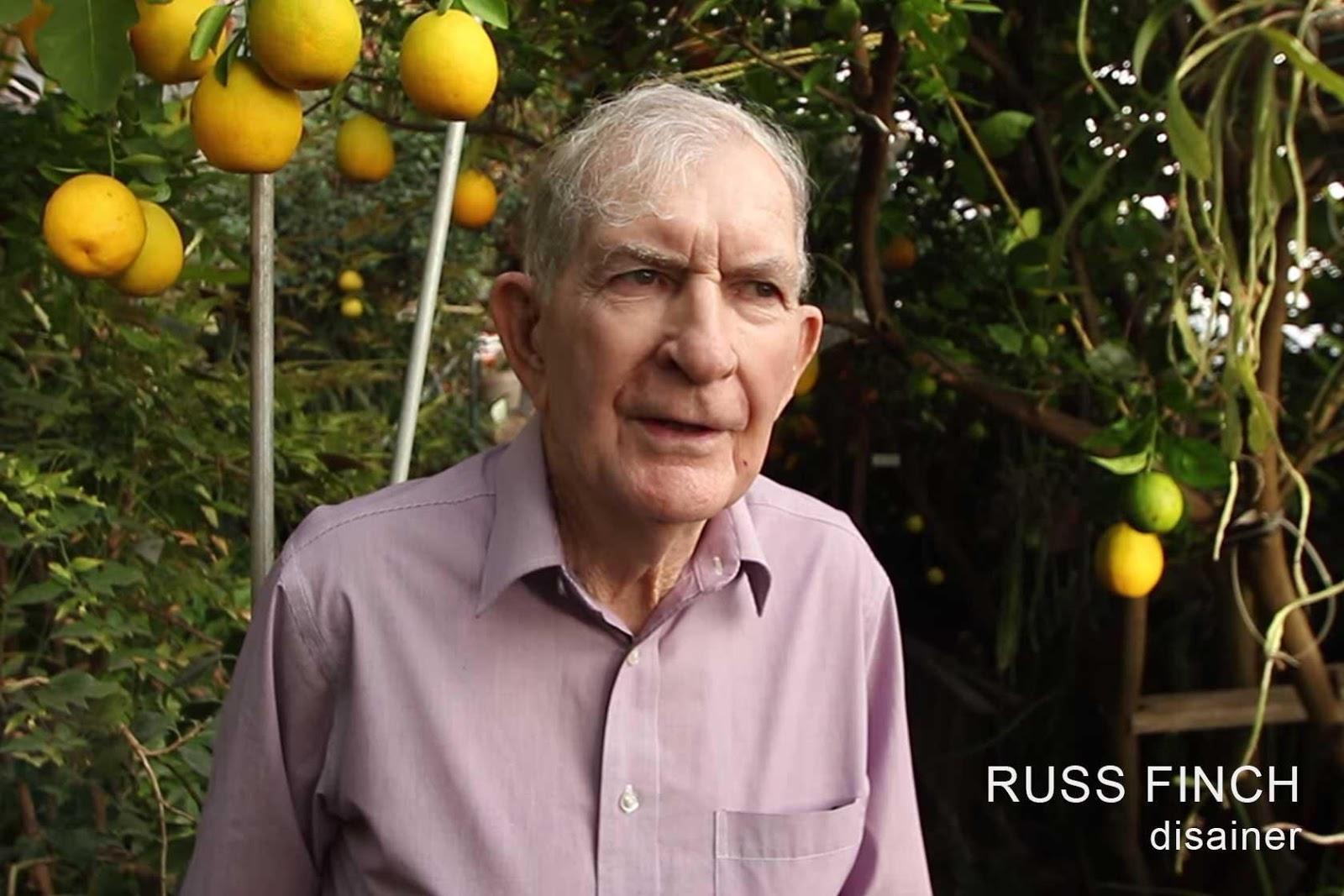A pensioner grows lemons in snowy Nebraska using the heat of the earth
How would you react if you heard that it was possible to grow oranges, lemons, mangoes, bananas and other exotic fruits in Estonia – all year round?
“No way!” might be your first reaction. But after a little reflection, you would correct your answer. The question is at what cost and energy. Cucumbers are already grown all year round, but look how high the price of cucumbers is in winter.”
You’re right, but allow me to introduce you to an innovative greenhouse model. And don’t worry if you’re not really interested in greenhouses or growing food. This is also a very exciting solution for the gardening-minded. Please note: we are talking about a greenhouse that can grow more than a thousand kilograms of fresh fruit all year round; that costs less than a euro a day to run; that is fully automated and costs less to build than a few people’s garage.
Calculated, such a greenhouse should be able to meet the annual fruit requirements of at least a family of five. In addition, these greenhouses can also be built specifically for sale. This is a solution for young small-scale farmers starting up and organic producers looking for a competitive way of production.
Who came up with the idea of growing oranges in snowy climates and is his model really suitable for Estonia?
This ingenious greenhouse is the brainchild of Nebraska, USA-based gardener Russ Finch. Although its latitude is just south of Estonia, its continental climate means that winters are cold and snowy, similar to Estonia.
When growing food, one of the most important factors to consider is the hardiness zone, where one of the most important factors for the grower is the coldest temperature in winter. For example, you can know which fruit trees grow in a given climate and survive the winter by looking at the maximum minus degree in winter.

Half of Estonia lies in zone 5 and the other half in the even warmer zone 6. Thanks to the Baltic Sea, we have a fairly mild climate, despite our high northern latitude. Russ Finch’s greenhouse was built with Zone 5 in mind. So, its winters are as cold as those in Narva, for example. However, several greenhouses based on his design can be found further north.
Russ Finch affectionately refers to his greenhouse design as a “snow greenhouse“. He has been developing the original design for the last 35 years. In fact, it was only when Russ had retired from his day job that he started developing greenhouses. It’s never too late to start new projects, even if you have no previous experience or university education – like Finch.
To date, around a hundred “snowy” greenhouses have been built in America under Russ Finch’s guidance. We can also add to this the large number of people around the world who have built these greenhouses on their own, based on Russ’ plans.

What is the big breakthrough for ‘snowless’ greenhouses – what is the key to their success?
The first key breakthrough is the harnessing of geothermal energy.
This is a solution similar to the land heating system that Estonians are quite familiar with, but it is many times cheaper. A trench at least 2.5 metres deep must be dug in order to make effective use of the ground heat. The total length of the ditch must be 70 metres. Plastic tubes are placed at the bottom of the trench, in which the cold air circulating is warmed up by the ground heat and reaches the greenhouse at 12 degrees Celsius. At a depth of 2.5 metres, the ground temperature is stable at 11-12 °C (52 °F) and the 70-metre journey is long enough for the air to warm up. The same system can also be used to cool the greenhouse in summer, should the need arise.
Another design breakthrough is burying the greenhouse half underground and insulating the bottom.
The sun always shines on us from the south.Therefore, in a greenhouse that is warm all year round, it makes no sense to keep windows on the north side, but instead to insulate this side properly and to insulate it with earth to minimise heat loss. Burying the greenhouse half in the ground also helps to keep it warm.
Such geothermal greenhouses could also potentially be built by small farmers to grow exotic fruit for sale.
Here are some of the figures that Russ Finch publicly shares in his materials:
(Calculations made in early 2021, documentary made in 2018)
- The greenhouse can accommodate 18 fruit trees (2.5 m in diameter).
- A single citrus tree, such as a lemon tree, produces an average of 57 kg of lemons a year when in full bloom. (It also thrives in winter and keeps the fruit fresh on the tree.)
- Russ Finch sells its products at comparable market prices. For example, oranges are $3.50/kg, which is around €3/kg. (The price per kilo of organic orange in Mahemarket is 2,90 € as of 25.01.2021.)
- Selling the entire production directly to the consumer will generate a profit nine times higher than a grower growing oranges in a warm climate. In other words, a single tree provides as much financial benefit to a northern orange grower as nine trees to a Florida grower.
- Electricity costs for fans average €0.80/day. (as at 25.01.2021)
- A fully automated greenhouse costs around €20 000 in total (if water and electricity are available). If you cut down on the full automation and compromise on the construction, you can build a fully functioning greenhouse for less than €15 000.
- The life expectancy of a greenhouse with a metal structure is over 50 years.
- Maintenance should be carried out every 15 years. Maintenance work includes, for example, replacing polycarbonate covers and servicing fans.
In addition, climbing plants, ground cover and other warm-weather plants can be grown in the “snow greenhouse”. As long as the lemon and orange trees mature within 6-12 years, other high-margin fresh produce can be grown in the greenhouse.

Why do we need such geothermal greenhouses?
The fruit is available in the shop and at a relatively good price. Couldn’t we carry on as we are – importing fruit from countries where it is much easier to grow?
Imports of fruit and fresh food will certainly continue one way or another. However, such a greenhouse is unlikely to cover the food needs of the entire Estonian population. But it is a very important step in the right direction. In every sense of the word – ecological, sustainable, healthy and close to nature – it is good to take a local approach to food. Domestic greenhouse produce is fresh, not in post-prepared containers. It’s also organic, because it grows in a controlled and well-tended environment with minimal pests and organic fertilisers.
The issue of food security has also been raised frequently in recent years. What happens when there is a drought and frost in a region for several years in a row, and bananas from the other side of the world can no longer reach the shop?
What will happen to our food crops in the event of a long-term power cut?
How do we cope with natural disasters that disrupt global supply chains?
How do we deal with a potential man-made crisis that will also wreak havoc in grocery stores?
It is not possible to prepare for everything, but a geothermal greenhouse is at least one way in which we can help ourselves and secure ourselves. History confirms that such crises happen again and again, and a prudent nation is prepared for them.
Is there anywhere to see a geothermal greenhouse?
No such greenhouse is yet known to have been built in Estonia. Hopefully this article will inspire some smart people to make it happen.
In the meantime, it’s worth watching this video for inspiration and reading more on Russ Finch’s website. Comprehensive construction plans for the greenhouse can also be purchased from the website.
Watch the video introducing the greenhouse here
https://greenhouseinthesnow.com
After the article was published, several readers gave the greenhouse good feedback.
For example, it was pointed out that the operation of such a greenhouse must take into account the domestic winter sunlight. We tend to have too few sunny days in winter, which means that installing extra lights is probably a good idea.
Russ Finch also talks briefly about the use of auxiliary lighting in his book.
It was also pointed out that in Estonia, the earth’s temperature is stable between 5-8 degrees (instead of 12 degrees). Whether this alone will be enough or whether additional heating will be needed is not known at this stage.
Sources:
- Russ Finch e-book – “Greenhouse in the snow”
- https://greenhouseinthesnow.com
- https://www.youtube.com/watch?v=ZD_3_gsgsnk
- https://www.youtube.com/watch?v=4O3ifR-3zvs




 All products
All products
 Powders
Powders
 Capsules
Capsules
 Tinctures
Tinctures
 Kits
Kits
 Brain health
Brain health
 Immunity
Immunity
 Nails and skin
Nails and skin
 Eyes and joints
Eyes and joints
 Liver health
Liver health
 Body cleansing
Body cleansing
 Babies and mothers
Babies and mothers
 Dry goods
Dry goods
 Natural sugars
Natural sugars
 Spices
Spices
 Natural cleaning products
Natural cleaning products
 Drinks
Drinks
 Dried fruit
Dried fruit
 Herbal teas
Herbal teas



